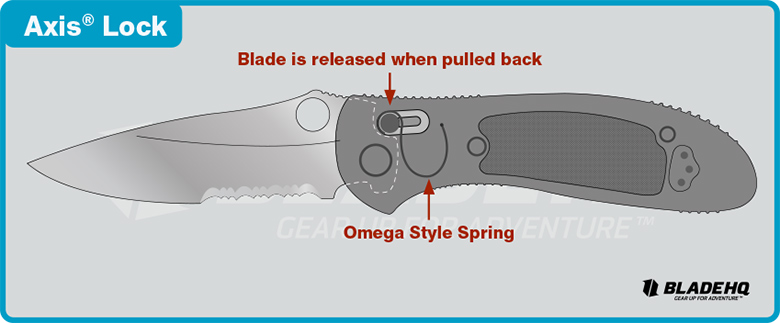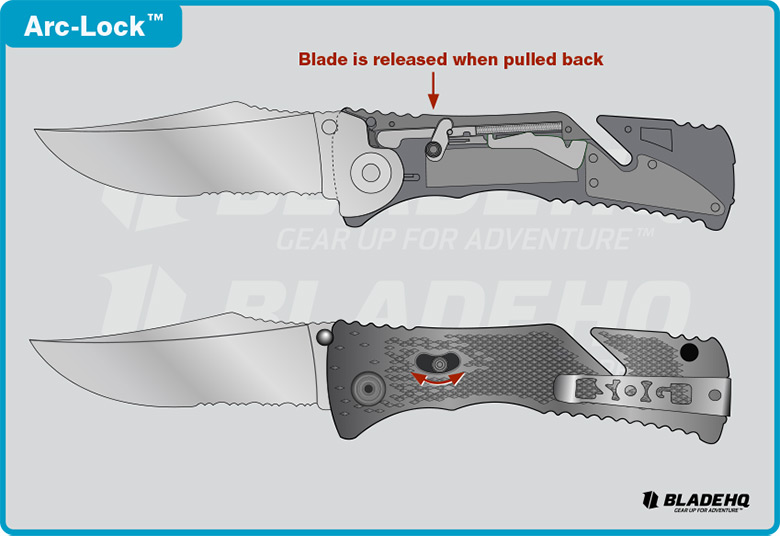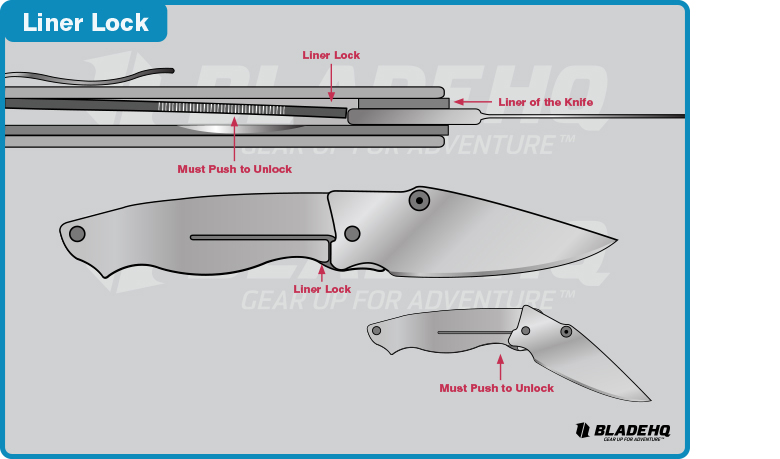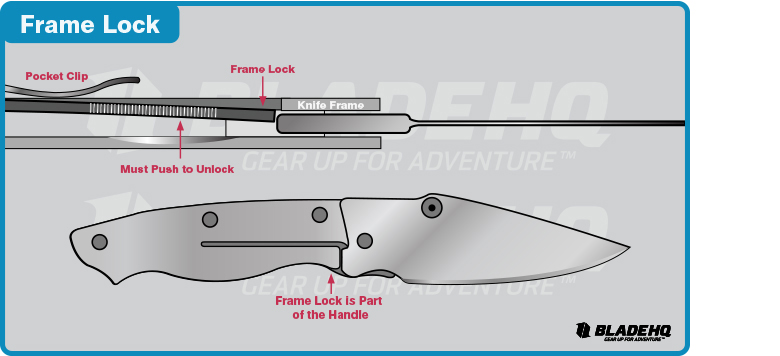A couple of weeks ago on Blade HQ’s main blog (Knife Blog), I shared a couple of infographics on different knife locking mechanisms. Locking mechanisms are pretty interesting, but not all of them can be found in your everyday spring assisted knife. To view the full infographic, you can head on over to KnifeBlog.com, but in this post I’m just going to go over the locking mechanisms you’ll find in spring assisted knives. Enjoy!
Knife Locking Mechanisms
First, let’s go over some brand-specific knife locking mechanisms.
The AXIS® Lock is a locking mechanism that you definitely need to be familiar with. The AXIS® is Benchmade’s patented locking mechanism, and it’s one of the strongest locking mechanisms in the spring assisted knife world right now. The AXIS® can be found on Benchmade spring assisted knives as well as other Benchmade folding and automatic knives.
The AXIS® features a steel rod (sometimes referred to as an AXIS® bar) that goes through the handle, from one steel liner to the other. (This is the part you see in the image above that releases the blade when pulled back.) The rod is spring loaded, thanks to the omega style spring you see pictured above. After the rod has been pulled beck, the blade is released and the rod lodges in place in a notch located at the blade’s tang, and a stop pin wedges the blade in place as well. The rod has to be pulled again to unlock and free the blade in order to close it.
The Arc-Lock ™ is SOG’s locking mechanism. It is similar in concept to the AXIS® lock, but rather than sliding horizontally, the steel rod in the Arc-Lock ™ rotates back and forth on a pivot in an arc-like fashion, which is quite possibly where the name “Arc-Lock ™” came from.
The Arc-Lock ™ actually takes on two different forms—one in SOG’s folding knives and one in SOG’s spring assisted knives. The graphic you see above shows the spring assisted version.
Both of the knife locking mechanisms you see above are used exclusively with the brands that made them. Now let’s move on to generic knife locking mechanisms that you will see in spring assisted knives of all brands.
The liner lock is one of the most common types of locking mechanisms around. It’s really simple to operate, too. As you can see from the picture above, a liner lock utilizes a portion of the liner inside of the knife’s handle that has been partially cut out. When the blade is opened, the liner gets locked in place under the blade’s tang. To close the liner lock knife, the liner must be pushed to the side to unlock the blade and allow it to close. Liner lock knifes are one of the more common spring assisted knives
A frame lock is very similar to a liner lock. It was actually developed by Chris Reeve and its technical name is the Reeve Integral Lock, but most simply call it by its generic name: the frame lock. Rather than utilizing the liners, the frame lock uses a partial cutout of the handle, or frame, to secure the blade in place.
What’s your favorite locking mechanism?
Found your favorite locking mechanism? Head over to Bladehq.com to find the best prices on the knives you love.




